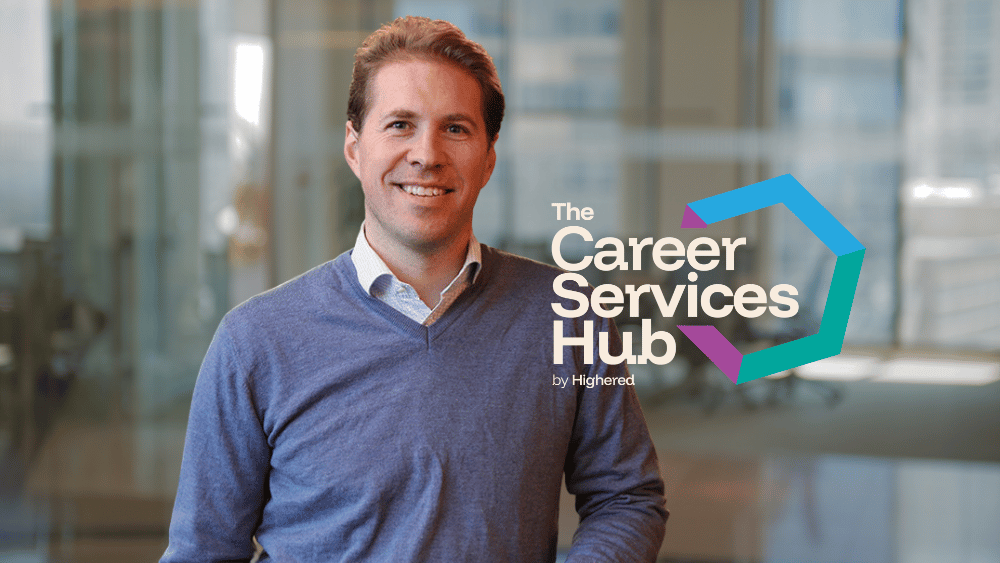Not being able to digitize in line with application volumes and quality, early talent recruitment is still plagued by manual processes, high resource requirements, and poor screening quality. This makes it unable to scale, remaining local (1-3 prioritized schools) and dominated by a few key companies.
Recruiting early-career talent has always been about investing in the future—talent that brings fresh perspectives, new skills, and the adaptability needed to drive organizations forward. But while the potential of early-career hires is undeniable, the process of attracting, identifying, and selecting the right candidates remains very manual and resource-intensive. See a list of some of the challenges with early talent recruitment here. Also, once hired, you need to involve and train the new hires effectively to develop them and strengthen ROI. This has, for DECADES, been driving the market for early graduate recruitment in distinct directions:
From a company perspective, we can, to simplify, put companies into two buckets—either you are “in” or “out” of early talent recruitment. With “in,” we mean that some, often large, corporates invest heavily in finding talent early, screening, hiring, and training them at scale, integrating it as part of their business model. And with “out,” we mean those who find this too cumbersome and expensive and would rather “wait” for the talent that has been through the “in”-companies’ training funnel before recruiting them.
With the high costs of attracting early talent and the very high volume, manual, and resource-intensive assessment and screening processes, early talent recruitment has remained quite local in nature. Even large “in” companies often don’t source from more than 1-3 priority schools, as their assessment is so manual that they need in-depth school, grade, and program knowledge to screen efficiently.
On the other end, defining “WHAT” skills and profiles one is looking for in early talent in this technological and policy-shifting landscape is becoming more difficult. Throwing in AI-optimized application letters, CVs, interview training, and automated application agents is making the screening process exponentially more difficult, threatening to make these underlying structures even more sticky.
Here is a summary list of some of the challenges
If you cut through the clutter, there are clear trends that will support corporates in reducing costs and increasing quality in both attracting and screening early talent.
As mentioned, the traditional, and currently dominant(!), approach to early recruitment relies on manual processes, local hiring pools, and subjective assessments, which often fail to meet the evolving needs of businesses. As always, organizations don’t need to simply fill entry-level positions; they need to future-proof their workforce, ensuring they have the right skills to navigate an unpredictable business environment. Because this is becoming ever more difficult to forecast in a rapidly changing environment, it requires a more analytical approach than ever before.
With the same evolving technology, there is good news for approaches and tools that can and will support corporations looking for early career talents to:
- Reduce costs in both a) Attraction and b) Screening, and
- Ensure and even increase quality in screening.
But before we go into that, I’ll just list some of the summary notes from the companies we talk to when it comes to what they are looking for—and some (obvious) opportunities linked to this.
At least three things stand out in terms of assessing early talent:
1
Really moving beyond resumes and grades, and assessing for potential
This is, of course, hard, but research suggests that cognitive capacity, logical reasoning, and loyalty (in the form of delivering what you have said you will do, on time) just continue to increase in predictive accuracy for work performance. The “processor” as a basis to evaluate, adopt, learn, and develop is just increasing in importance.
Opportunity: This means that good assessment test and grades are increasing in strength as job success predictors. This in turn means that you could rely more on test and assessments to do your screening, reducing costs, time and increasing quality. The challenge is to find the right ATS and Assessment partner that you truly can rely on giving a good candidate experience AND come out with the right candidates in the other end of the funnel.
2
Understanding the social fit – team and organization contribution
This could be a difficult one. You need to balance and understand the contribution to the team in terms of diversity (perspectives, development, and innovation) and fit in terms of energy and efficiency. For most personal interviews, this is mostly to understand if the candidate will “fit in” (as in “do I like them”). If you really want to excel and be top of class in hiring, this is not enough. However, personality assessment tests, which have been around for decades (also to pick out the “bad apples”), continue to improve in quality and interface, and are better than most structured interview formats. Even if we, as people, don’t like to think so…
Opportunity: As above, this means you could rely more on tests and assessments to do your screening, reducing costs, time, and increasing quality.
3
“Grit”
Does not come up in all dialogues and settings (like the two above), but could be drawn from merits, grades, and, to some degree, from personality tests.
- You need to think about your talent sourcing strategy. The more automated, high quality, and less manual the screening process, the more cost-efficient and broad you can be in this phase. E.g., leveraging networks like Highered.
- You need an underlying easy-to-use application tracking system (ATS) to support and track the candidates.
Note: These systems are typically sticky. Spend some time choosing one and be aware—there are many old and cumbersome systems out there! - An automated assessment system of quality(!), ideally integrated with your ATS.
Note: Most of the high-quality ones are currently separate suppliers, but most have integration options. Personally, I think this is where we will see even more “out-of-the-box” solutions with everything integrated. - A separate resource to quickly (ideally automatically) compare schools, classes, and grades. Note: So far, all I have seen here are proprietary (made and owned by individual companies), but I think this is an area where we will see new players and solutions come shortly.
- Structured interviews. This one you know, or can easily check out in separate articles.
And don’t forget a strong onboarding and development program within your organization (also needs to be tailored by company) to ensure you maximize the ROI on your recruitment investments.
For some generic tips on early talent recruitment, we have also created a list to keep in mind. Feel free to reach out with questions or comments!
About Highered
At the Global Career Service Hub Highered, we help bridge the gap between top employers and early-career talent. Our platform streamlines recruitment, making it easier for students to find international opportunities and corporates to reach students, at scale. Whether you’re an employer looking to build a future-ready workforce or an academic institution preparing students for global careers, we provide the tools and insights to make early recruitment more effective.
The Challenges of Early-Career Recruitment
- Manual and Resource-Intensive Hiring Processes
Screening and assessing large volumes of candidates is a time-consuming and often inefficient process. Many organizations still rely on traditional CVs and interviews, which are not only subjective but also fail to assess a candidate’s long-term potential effectively. - Limited and Localized Talent Pools
Many companies recruit from a small number of universities or rely on traditional in-person events, limiting their access to diverse and high-potential candidates from a broader range of backgrounds. - Short and Incomplete Candidate Profiles
Unlike experienced hires, early-career candidates often lack a long work history, making it difficult to assess their skills and potential through conventional methods. How do you spot leadership qualities or problem-solving abilities in someone who has never worked in a full-time role? - Balancing Speed and Quality in Hiring Decisions
In a tight labor market, recruiters need to act quickly to secure top candidates. However, fast hiring decisions made under pressure can lead to inconsistent selection processes and missed opportunities. - Identifying Future-Ready Talent
The business landscape is evolving rapidly. Companies need employees who are not only capable of performing today’s tasks but who also have the adaptability, curiosity, and resilience to take on tomorrow’s challenges.
Here are some key strategies to improve recruitment efficiency and ensure long-term success:
- Expand Your Talent Pool Through Digital and Data-Driven Methods
Instead of limiting recruitment to a few select universities or in-person events,
companies can leverage digital platforms to reach a more diverse range of candidates. Virtual career fairs, AI-powered screening tools, and skills-based assessments enable companies to identify high-potential talent regardless of location. - Move Beyond Resumes—Assess for Potential
Since traditional resumes don’t always reveal a candidate’s true capabilities, organizations should focus on alternative assessments. Gamified assessments, personality tests, and situational judgment evaluations can help identify qualities like leadership, problem-solving skills, and adaptability—traits that define future leaders. - Automate Screening for Fair and Efficient Hiring
With large applicant volumes, AI-driven tools can help recruiters quickly identify top candidates without bias. By using structured assessments and data-backed insights, companies can ensure a fairer, faster, and more effective selection process. - Provide a Realistic Job Preview
Early-career candidates often struggle to understand the realities of different roles. By offering interactive job simulations or pre-application assessments, companies can help candidates self-select into the roles that best align with their skills and interests, reducing early turnover. - Balance Speed with Strategic Hiring
Companies need to act fast to secure top talent, but this shouldn’t come at the cost of hiring quality. Structured selection processes, combined with real-time analytics, can help recruiters make faster and more informed decisions. - Foster a Culture of Continuous Learning and Upskilling
Hiring the right talent is just the beginning. Companies must also invest in learning and development programs to ensure their early-career hires continue to grow and adapt as business needs evolve. A focus on upskilling and reskilling will help organizations remain competitive in a rapidly changing job market.






